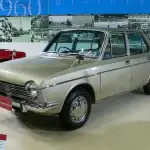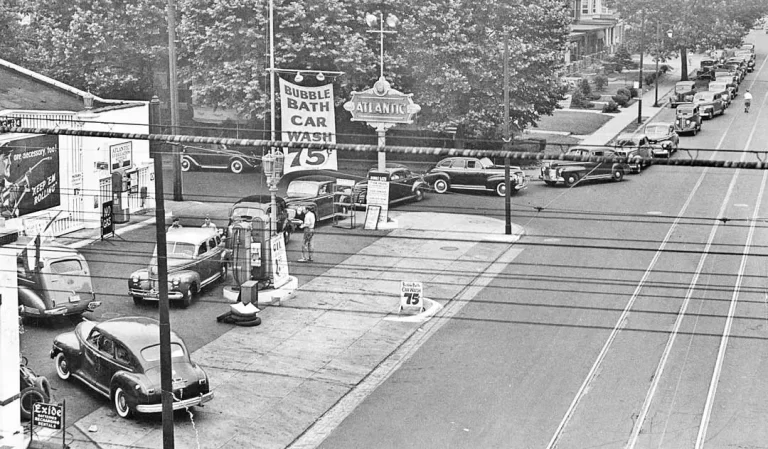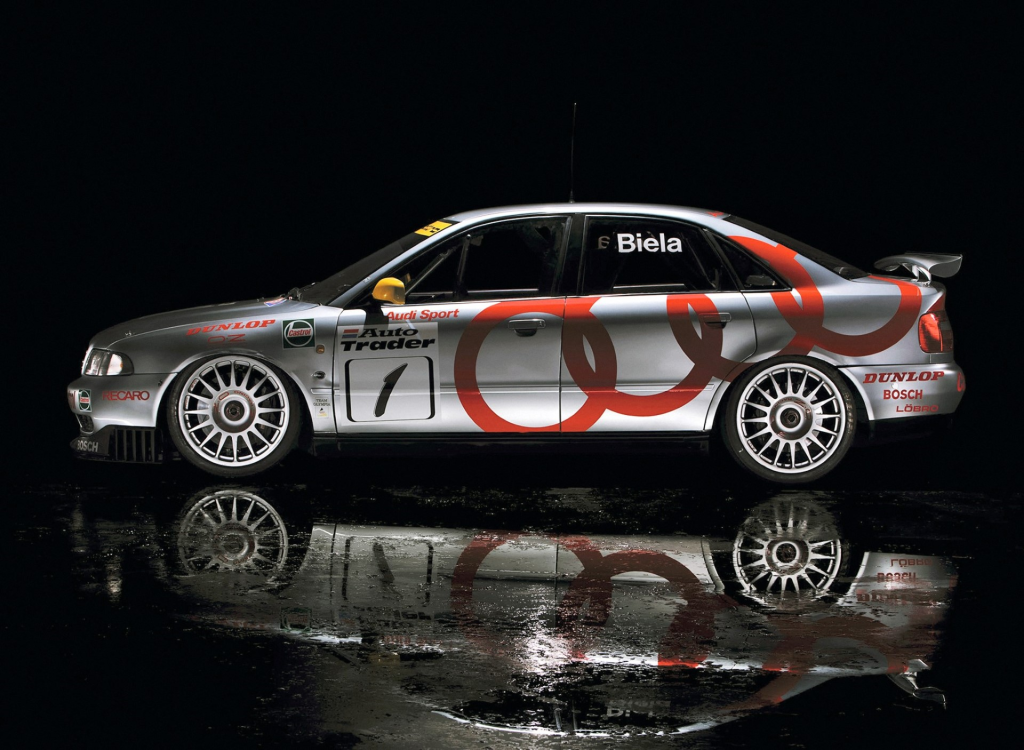
When Audi’s success in motorsports comes to mind, people often point to two particular eras as prime examples. One is Audi Sport’s—the racing arm of the Ingolstadt brand—exploits in the Group B rally racing that earned it the World Rally Championship’s manufacturer’s title in 1982 and 1984. Another went down a few years later in SCCA Pro Racing’s Escort Trans-Am Championship: Hurley Haywood, Hans-Joachim Stuck, and Walter Rohrl racked up enough podium spots behind the wheel of turbocharged 200 Quattros to earn the four-ringed brand the manufacturer’s title in 1988.
The successful formula behind both was Audi Sport’s use of all-wheel drive, forced induction, and stellar driver lineups, and made it a force to be reckoned with in grids across the US and Europe. But there’s another series where this formula came into play and deserves all the recognition as well: SCCA Pro Racing’s World Challenge GT Championship.
This chapter of early 2000s American sprint was quite fruitful for Audi, and this time it would be the B5-generation S4 campaigned by Champion Motorsports to rip across the start/finish line and give far more focused competition a strong run for its money. Here’s how the right car, engine, and team brought home the 2001 and 2002 driver’s championships, as well as the 2001 manufacturer’s title in a vibrant chapter of American motorsports.
The Right Four-Door from Europe
Like the 1988 Audi 200 Quattro, the B5-generation S4 was a generally understated four-door sedan. While more focused than the same-chassis A4, it still stuck out like a sore thumb in World Challenge’s GT lineup of Porsche 911s, Chevy Corvettes, BMW M3s, and other historically more focused two-door hardware.
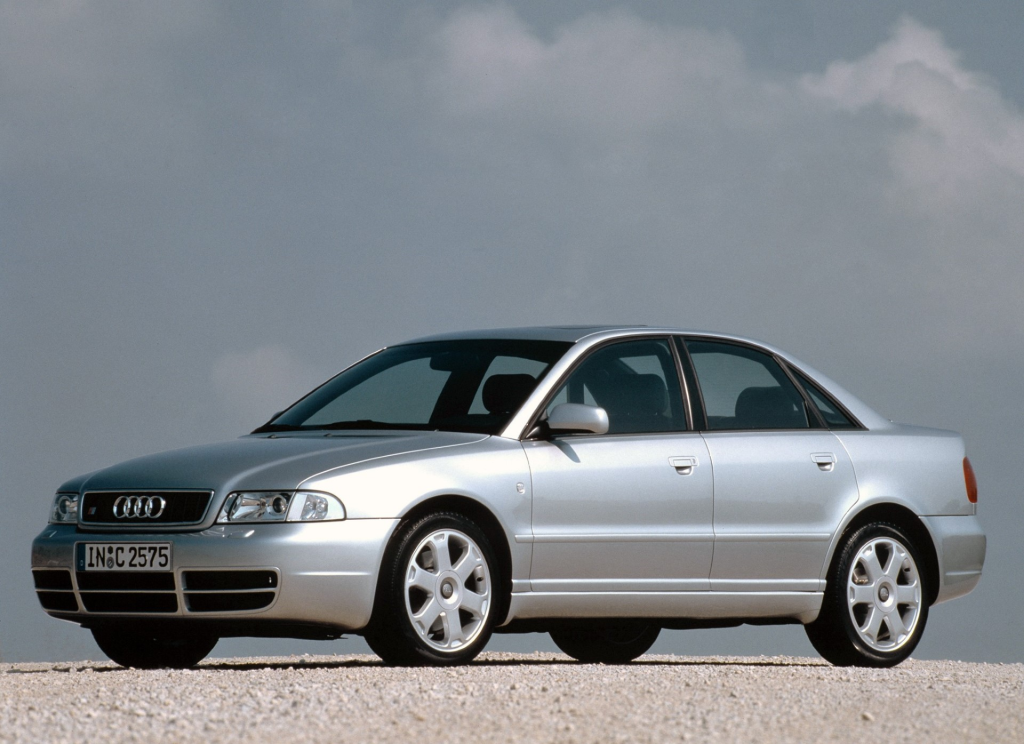
But what lied beneath was far from something pulled out of a dealer showroom. Instead, Audi already possessed several years worth of experience campaigning the A4 chassis abroad. This made it seemingly perfect for duty in SCCA Pro Racing.
Throughout the ‘90s, Audi Sport was deeply invested in the FIA’s Super Touring, a touring car class that either entirely made up or heavily influenced many countries’ premier touring car racing series, most notably the British Touring Car Championship and German Super Tourenwagen Cup. In the USA, we had the short-lived North American Touring Car Championship that sadly never caught on like it did in the rest of the world.
With the introduction of the B5-generation A4 in 1994, it couldn’t have been more advantageous for the Super Touring rulebook: Easy to find an engine at or below two liters, no forced induction, a long wheelbase and wide track, four doors, and market scale production numbers. Once Audi jumped in, the Ingolstadt firm immediately started racking up wins left and right with the A4, even after all-wheel drive was banned in 1998 and it had to resort to running it as front-wheel drive.
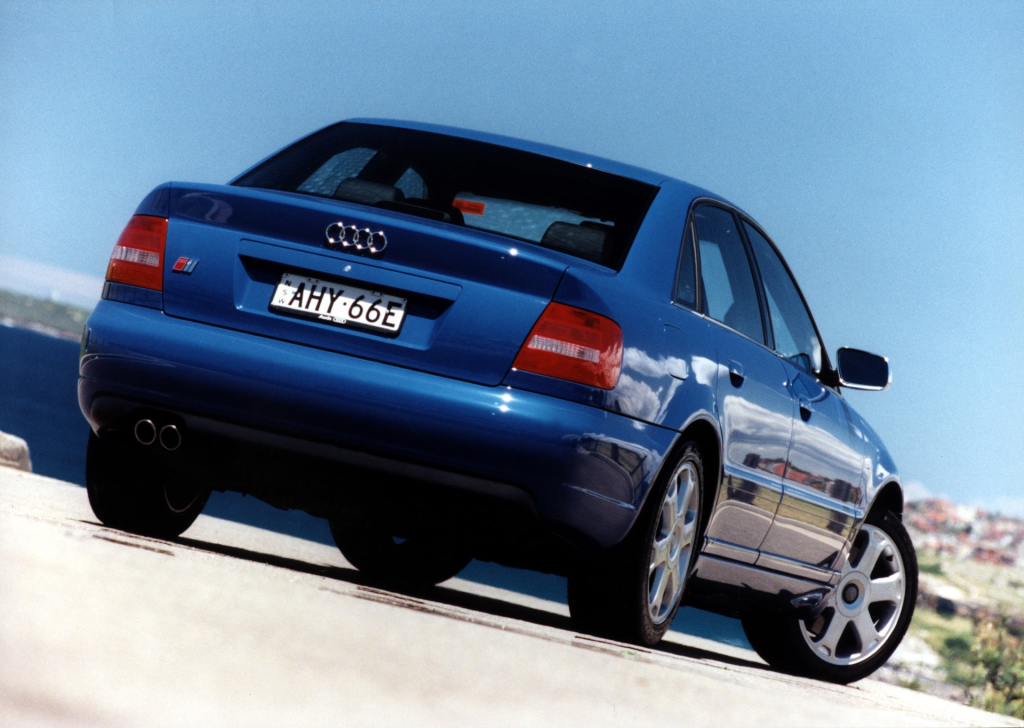
Once Super Touring died down at the end of the decade, Audi Sport utilized what it’d learned with the A4 and applied it to the more performance-oriented S4 in SCCA Pro Racing World Challenge GT Championship (World Challenge, for short) as a way to boost sales in the US.
After all, when has “race on Sunday, sell on Monday” not been the best form of marketing, ever?
Nearly identical to the A4 Super Tourer in terms of body, roll cage, and chassis—signature Super Touring rear wing and all—the S4 race car possessed slightly wider body work and other minor aerodynamic accouterments. Drivetrain-wise, the S4’s factory manual transmission was retained. But a new challenge arose: To be competitive in World Challenge’s GT Class, its twin-turbo 2.7-liter needed quite a bit more power.
A Not Exactly Showroom Powerplant
Beneath the World Challenge-spec Audi S4 lived the Cosworth-built, twin-turbo 2.7-liter V6 from the RS4 Avant (as in, the wagon variant) was selected. Thanks to its sturdier construction and larger turbochargers, it could more reliably handle the power needed to box all-race-long in the GT class ring.
Sadly, the American market never saw this powertrain on the dealership floor, but it’d proven to be an incredibly potent package abroad.
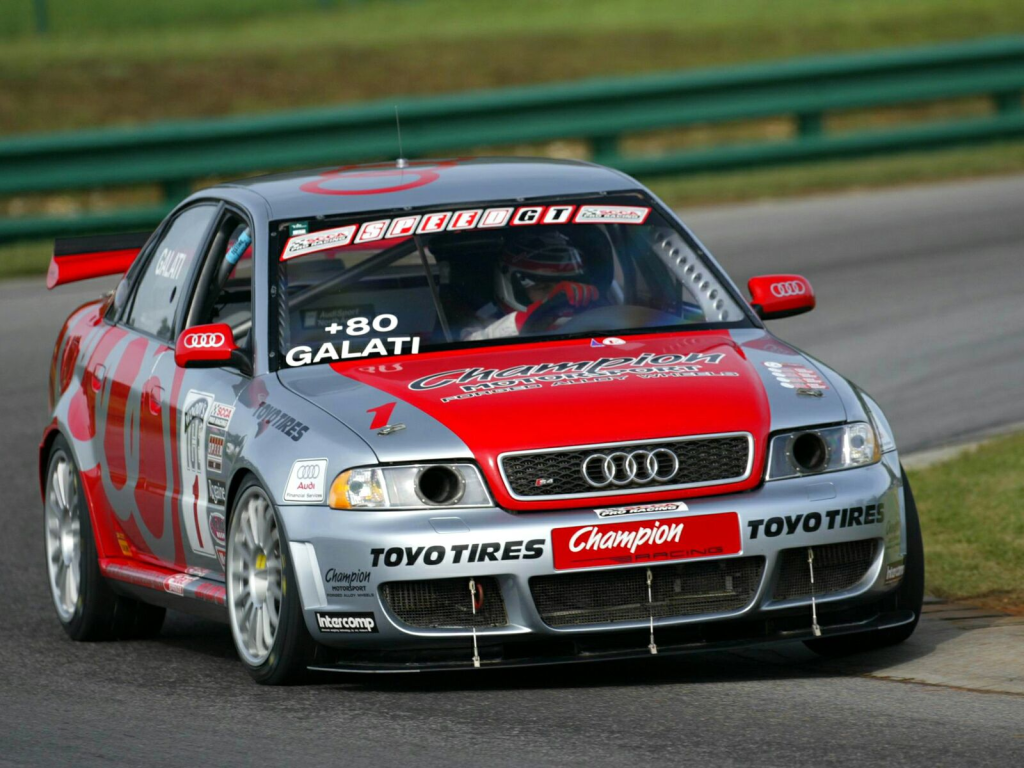
Which was of utmost importance as Audi’s more focused competition was significantly lighter. The 996-generation Porsche 911 Cup had no issue meeting the series’ 2,800-pound minimum weight—it typically hovered around 2,500 lbs off the line in Stuttgart. The road-going S4 was right over 3,600 lbs; sure, race cars are by default far lighter than their everyday counterparts, but the S4’s Quattro all-wheel drive system, as well as iron-block V6 with two turbos and all of its supporting ancillaries didn’t make weight loss easy.
Competition weight generally hovered around 3,000 lbs.; an improvement, however even with all-wheel drive, high horsepower was needed to balance the equation. Around 420 was achieved for good measure.
The Cosworth lump’s factory power was rated at 380 horsepower—around 130 more than the US-spec S4’s factory twin-turbo 2.7—thus, some steps were taken to reliably push more boost at race pace, even if the season consisted entirely of sprint races. For improved cooling, the RS4’s more free-flowing front bumper cover was fitted, as was its satin aluminum-trimmed grille … well, the latter was probably more for show. Otherwise, the factory intake system was altered for improved flow and intercooling, its radiator and oil coolers were upgraded, and sturdier drivetrain components were fitted. Despite all this, anyone familiar with the powertrain might be surprised by how factory the whole setup looked with a quick glance under the hood.
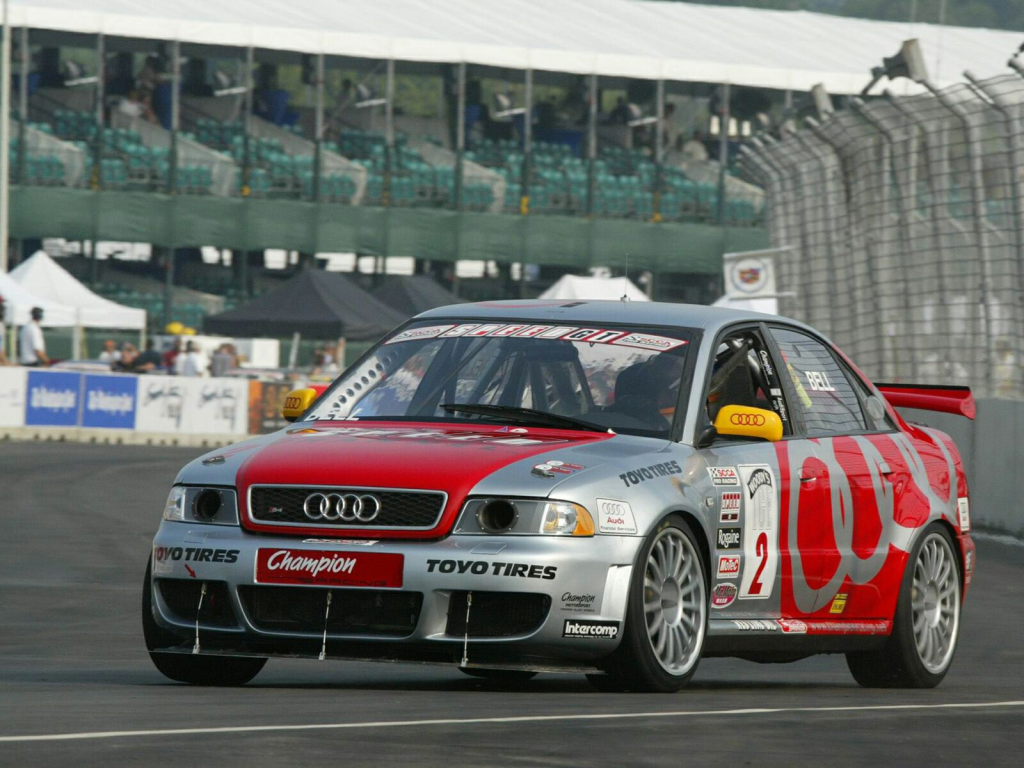
With a sturdy turbocharged V6 powerplant sourced from Cosworth, a Super Touring-proven chassis, and Quattro all-wheel drive, this creation was named the S4 Competition. Now, all Audi Sport needed was the right team to make a big splash and earn some hardware.
The Right Driver Lineup and a Team with Pedigree
To make the most of this chassis in American sprint racing, the right talent was needed behind the wheel. Up until the season’s start in 2000, Michael Galati racked up many hours—and wins—behind the wheel of a Honda Prelude and Acura Integra Type-R in World Challenge’s Touring Car class.
1996 was the Italy-born driver’s debut year after nearly ten in SCCA club racing and a brief-yet-win-filled tenure in IMSA’s Firehawk series. While he raced for Peter Cunningham’s RealTime Racing from 1996 to 1998, ‘99 was under the DC Sports banner. Galati earned four drivers’ championships during these four seasons and was now ready to move up to the faster and more focused GT class.
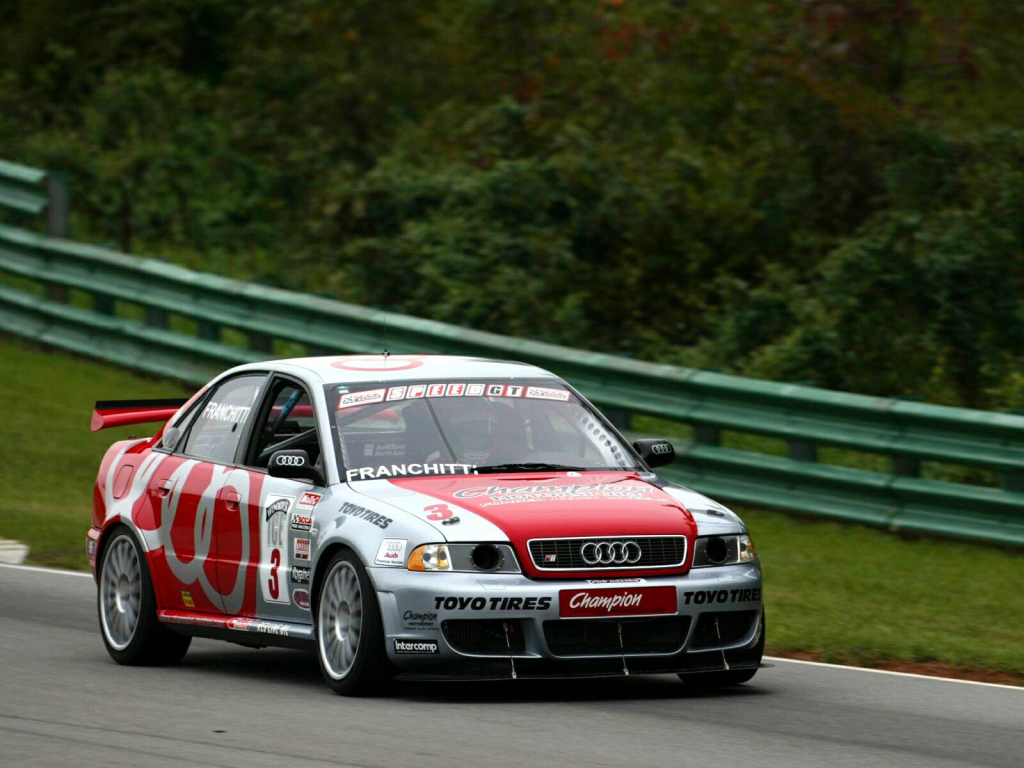
Joining him was none other than Derek Bell, a British touring, sports, prototype, and formula car racing veteran with more seat time in top-level Porsche race cars throughout the ‘80s and ‘90s than most of his generation. His stats are nothing short of impressive, too: two-time winner of the World Sportscar Championship, three-time Daytona 24-hour winner, and an astonishing five 24 Hours of Le Mans victories between 1975 and 1987. By the time the 2000 season of World Challenge arrived, he’d taken part in over well over 100 races.
Founded in 1994, Champion Racing were no strangers to campaigning European cars against stiff competition. Prior to 2000, the operation was best known in grids for running Porsches, including the iconic 911 GT1 with which it claimed a win at Watkins Glen and three other podiums in the 1998 US Road Racing Championship season. It then moved into the American Le Mans Series (ALMS) where it not only ran the GT1, but also a 911 GT3-R in the GT Class.
Simultaneously with its World Challenge activities, Champion campaigned the Audi R8 Le Mans Prototype in ALMS as well, racking up podiums and victories left and right, including the LMP1 and drivers’ championship in 2005.
Even if the S4 Competition was vastly different from prototypes, GT1, and full-fledged GT cars like the 911 GT3-R, it had all the ingredients needed to enter World Challenge. Especially with two very accomplished drivers as its main lineup (other drivers occasionally drove a third car), and a chassis that’d repeatedly proven itself in Europe and now had a high-horsepower V6 at its helm. With Bell piloting the No. 8 car and Galati in the No. 9, the stage was set.
Impressive Stats
The amount of podiums, wins, and championship that this operation achieved in three short years is nothing short of impressive. Over the course of the 2000-2002 seasons, Champion racked up eight wins and a total of 15 podiums, with Galati claiming all of the wins and Bell ascending the podium twice. Galati earned the No. 2 spot in the 2000 championship, but returned in 2001—and again in 2002—to win it. Between the two drivers, Audi won the manufacturers’ championship in 2001 and placed second in 2002.
And they’re truly thrilling races to watch; luckily, a lot of them are on YouTube. Whenever either the No. 8 or No. 9 stuck it on pole, you can see the torquey twin-turbo V6 and Quattro all-wheel drive put in the work to make the S4 Competition sink its claws in and rip off the line. Then, proceed to instantly gain a lot of ground on anything it was gridded next to. To borrow a turn of phrase from a classic short documentary about Audi’s success in Trans Am over ten years prior, it’s as if Champion truly had an unfair advantage.
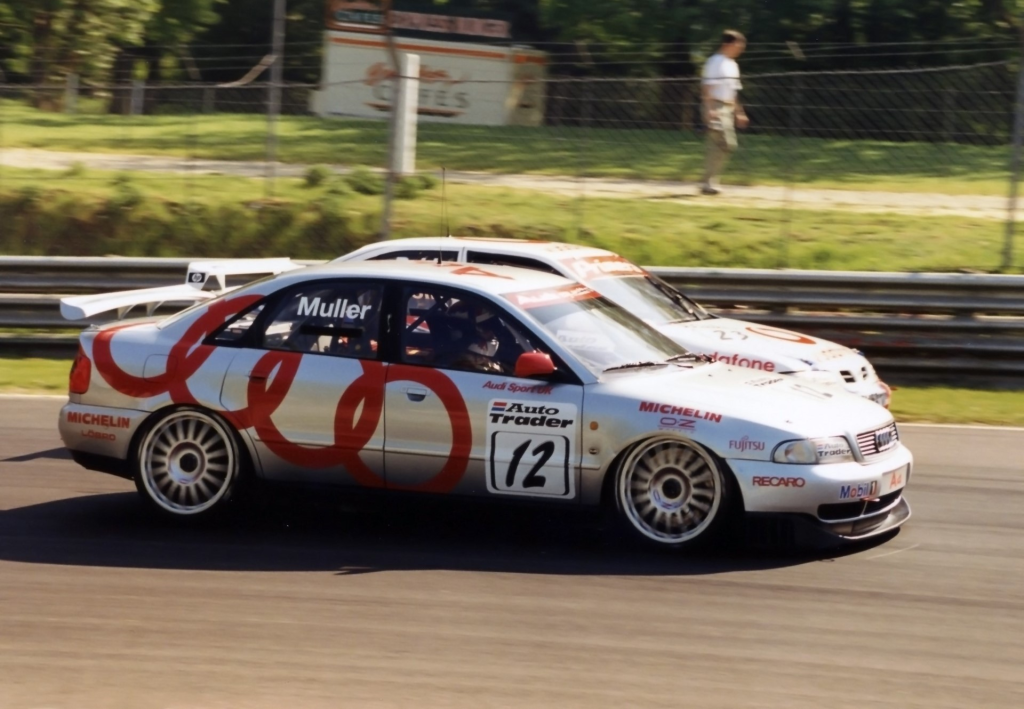
All-wheel drive would prove to be a major benefit race after race for Champion, but there was one particular special moment in the 2002 season at Road America that left officials, announcers, and competitors awe-struck.
Around the halfway point of the race, Bell had been battling with Bob Miller of the No. 23 Porsche 911 Cup for more than a couple of laps. It made for an entertaining scrap as the two fought hard to stay in the top 10, and with the No. 23 Chevy Corvette piloted by David Farmer slowly closing in, finishing in a good position was proving to be a tall order. Shortly after Bell got ahead of Miller, he overcooked it on the inside into Turn 5 and quickly lost position.
A few corners later, and with Farmer just a few car lengths behind, Bell put his foot down and passed Miller on the inside in one of the circuit’s most dangerous sections: Turn 11, the Kink. This bit of the track doesn’t look very intimidating on a track map, but it’s actually one of the highest speed sections where some of the most brutal wrecks have occurred throughout the track’s history. The fact that Bell was able to hold on—on the inside of the corner—through here is not only a testament to his skill as a top-level driver, but also the grip of Audi’s all-wheel drive.
The Silver Sedans That Could
Once again, the hardware that the Champion was up against was, by anyone’s opinion, far more focused than a fairly pedestrian-looking sedan. An Acura NSX, as well as C5 Chevrolet Corvettes, Porsche 911s, Ford Mustangs, and even the occasional Dodge Viper. High displacement with high horsepower to match, low weight (for the most part), rear wheel drive … stuff you’d typically expect to see classified as a grand touring motorsports entry. It’s quite impressive that Champion, Audi Sport, Galati, and Bell were able to come together and rack up as many wins and points as they did.

However, it’s worth including that Champion wasn’t the only team running an S4 during this era of World Challenge. APR/Mercatech campaigned a full US-spec model with driver Don Istook in the grid at the same time, though with less success—several mechanicals and nowhere near the podium for the five races it entered in the 2000 season. But then, APR/Mercatech not only had the challenge of working with a racing chassis that wasn’t prepared by Audi Sport itself, but also utilized the US-spec twin-turbo 2.7-liter V6. No extensive massaging by Cosworth. But it’s still cool that another team gave the chassis a chance.
What Audi Sport did with its B5 S4 Competition and a team like Champion in World Challenge is a high watermark of its motorsports history. Just like its success in rally and Trans Am, as well as Super Touring, prototype racing, and other arenas. It’s quite cool to look back and not only see how its basic formula was so successful, but also how it was a sort of underdog against much more household names and chassis. Before the 2000 World Challenge season, I’m not sure anyone would’ve ever imagined a scenario where a C5 Chevy Corvette and an Audi sedan are fighting each other lap-after-lap on America’s top racing circuits.
Peter Nelson is an automotive journalist who has contributed to The Drive, Donut Media and many other media outlets.




